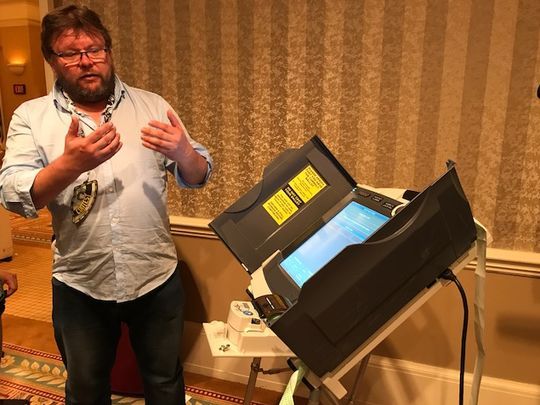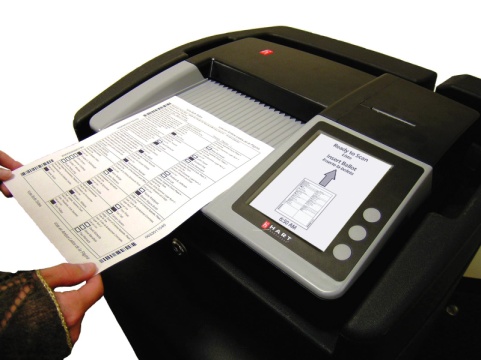Virginia Ends Use of Touch-Screen Voting Machines
Daily News Article — Posted on September 14, 2017
(by Byron Tau, The Wall Street Journal) – Election administrators in Virginia ordered the state’s remaining touch-screen electronic voting machines be taken out of service in advance of the coming statewide election, after hackers demonstrated vulnerabilities in an array of election technology at a recent security convention.
Virginia, one of two states holding statewide elections for governor and state legislature this year, won’t use any touch-screen machines in the Nov. 7 general election after the State Board of Elections voted Friday to revoke the certifications on all such systems still being used in the state.
Virginia will switch to paper ballots counted and processed by computerized scanners. [Voting machines that record votes on paper instead of only electronically, allow the votes to be audited and verified.]
James Alcorn, chair of the board, said in a statement the move was “necessary to ensure the integrity of Virginia’s elections.”
… Virginia’s decision came after one of the state’s electronic voting machines was hacked in less than two hours at the DEF CON hacking and security convention in Las Vegas in July. As part of a security demonstration on the vulnerabilities of election technology, hackers cracked a machine last used in a 2014 election in Fairfax County, Va., by exploiting a security flaw that has been known to systems administrators for more than a decade, but had not been patched on the voting system.

Harri Hursti, a co-coordinator of a weekend-long Voting Machine Hacking Village event at the DefCon computer security conference in Las Vegas. Hursti is a partner at Nordic Innovation Labs and an expert on election security issues. (Photo: USA Today / Elizabeth Weise)
Though the model that was hacked at the conference was already decertified by the state and wasn’t used in the 2016 election, the state still allowed use of seven other kinds of electronic voting machines until this month. The Virginia Department of Elections specifically cited the conference in a recommendation to the state board as a reason to end the use of electronic voting machines.
The decision by the board gives the state’s jurisdictions that still use touch-screen electronic machines just eight weeks to obtain and deploy new technology. Administrators noted just 140 precincts serving roughly 190,000 of Virginia’s five million voters will be affected by the decision. Most jurisdictions in the state have already eliminated the technology.
… The decision by Virginia to stop using touch-screen electronic voting machines marks a victory for advocates who have long criticized paperless electronic voting systems as insecure and potentially vulnerable to tampering and mischief.
“Paperless voting machines with no paper backups should never have been used in the first place,” said Barbara Simons, president of the nonpartisan group Verified Voting that advocates for a paper trail and random audits. She said she hoped other states would follow Virginia’s lead in eliminating systems with no paper backups to bolster security and public confidence in their elections.
Use of touch-screen machines peaked in 2006, according to data from the Pew Research Center and Verified Voting. Most voters now use what are called optical-scan systems—voting by paper ballots that are then scanned and counted by computerized scanners. Other electronic voting machines also have paper backups in response to concerns about integrity.

The Hart Intercivic eScan is a precinct-based, digital ballot scanning system. After marking a paper ballot, the voter feeds it directly into the eScan at the precinct. The ballot image is stored as a Cast Vote Record (CVR) on a flash memory card that can be retrieved and tabulated when the polls close. (VerifiedVoting.org)
[Touchscreen machines are still in use in several states, including New Jersey, Georgia, and Pennsylvania.] Verified Voting estimates that 20% to 25% of the U.S. population still votes on electronic machine with no paper backups.
Background
The types of voting equipment used in the United States vary from state to state. Visit the ballotpedia page for breakdown by state.
Go to the National Council of State Legislators website for explanation on the eight states that hold election by mail.
Read about Voter ID laws by state at ncsl.org.
